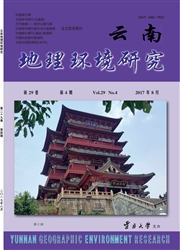

 中文摘要:
中文摘要:
采用空间自相关和分解分析方法,以市域为研究单元,对2000~2014年淮海经济区工业SO_2排放的空间差异特征及影响因素进行分析。结果表明:淮海经济区工业SO2排放的整体差异呈减小趋势,其中豫东、鲁南、皖北和苏北之间的差异起主导作用;在空间关联上,淮海经济区工业SO2排放存在正的空间相关性及显著的空间集聚特征,并形成以莱芜、泰安为代表的高值集聚显著区域和以开封、亳州、阜阳为代表的低值集聚显著区域;规模效应、技术效应和空间结构是淮海经济区工业SO2排放的主要影响因素,其中规模效应对工业SO2排放有促进作用,技术效应则呈抑制作用,空间结构效应的促进作用出现概率大于抑制作用。
 英文摘要:
英文摘要:
Taking the urban area as the research unit, the paper analyzed the spatial difference characteristics and influencing factors of industrial sulfur dioxide emissions in Huaihai Economic Zone from 2000 to 2014 using the methods of spatial autocorrelation and decomposition analysis method. The results showed that the overall difference of industrial sulfur dioxide emissions in Huaihai Economic Zone presented a decreasing trend, and the regional interregional differences of East Henan, South Shandong, North Anhui and North Jiangsu were the main reason for the overall difference of industrial sulfur dioxide emissions. On spatial association, industrial sulfur di- oxide emissions in Huaihai Economic Zone are positive spatial dominance and significant spatial agglomeration characteristics, and the formation of high value agglomeration in Laiwu and Taian as the representative of the significant areas and Kaifeng, Bozhou, Fuyang as the representative of the low concentration of significant areas; Scale effect, technical effects and spatial structure were the main influencing factors of industrial sulfur dioxide e- mission in Huaihai Economic Zone, which scale effect on the industrial sulfur dioxide emissions had a catalytic effect, the technical effect was inhibited, the spatial structure effect of the promotion of the probability of greater than the inhibitory effect.
 同期刊论文项目
同期刊论文项目
 同项目期刊论文
同项目期刊论文
 期刊信息
期刊信息
